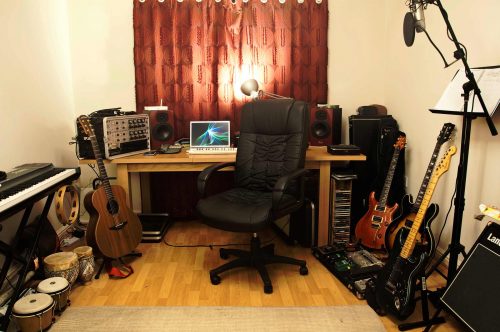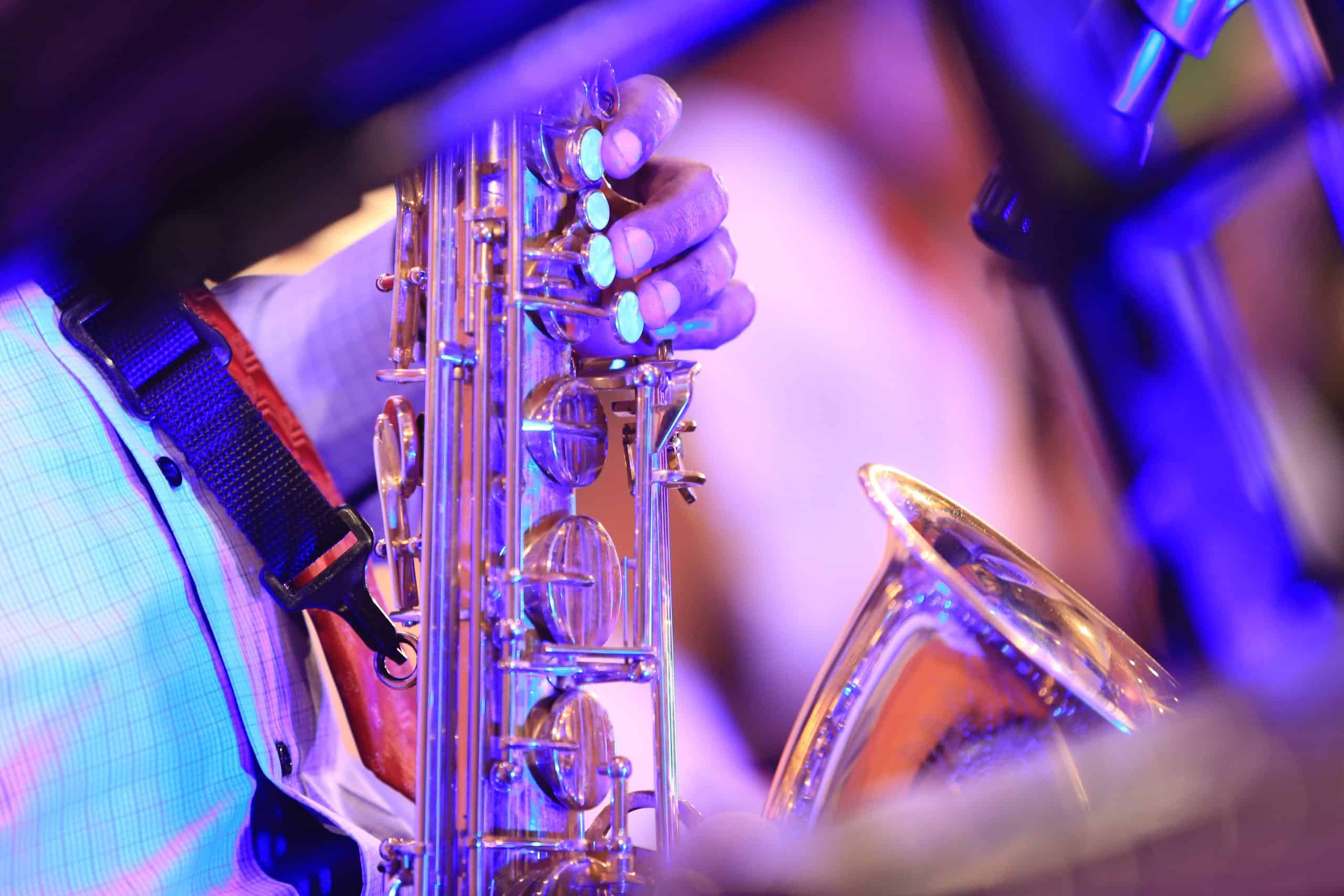Singing is such a beautiful way to express yourself. It comes from your own body and can create sounds that soothe, excite, and elicit strong emotions in yourself and your audience. If you’ve been trying to learn to sing as a beginner you have come to the right place.
Singing is best learned through lessons with a trained professional, but we’ll offer some sourced tips to help pave the way for your singing journey.
1. Can I Teach Myself to Sing?
Not only can you teach yourself to sing, you probably already have some foundational singing skills.
- You Are Naturally Able to Sing: If you’ve ever sung along with the radio you know that there are some qualities in your voice that can be brought out by at-home learning or professional lessons.
- Singing Along: What are your favorite bands/artists? Do you regularly sing along with the radio? If you do, keep doing it! Singing with your favorites can not only make you a better vocalist, but can give you a leg up on sounding similar to your favorite singers.
- Warm-Ups: Warming up is essential to any singer’s routine. Here is an example of a singing lesson on Youtube. Many vocal coaches commonly use the linked warm-ups to open the voice up so that it is less able to be injured as well as to produce better tone.
- Combine At-Home Resources with Pro Lessons: More often than not, people will go with a combination of at-home and professional lessons. Search online for local music schools that can compliment and help your practice improve once you feel comfortable enough. Teachers are there to help nurture your talents.

2. How Can I Improve My Singing Voice?
Let’s get more specific on vocal warm-ups. There are a few standard techniques that the majority of singers use whether they have five minutes or an hour to get ready to sing.
- Sirens: Commonly, this will help open up your throat and get your voice going from your lower register to your upper. It’s easiest to start with these because it gives your entire range a workout that can be as gentle or as forceful as you need.
- Scales: You’ll always see singers in film and television practicing scales. Essentially, if you run up and down notes that are within your range from chest to head voice and beyond, you can create a solid foundation for performance and practice.
- Jaw Loosening Exercises: Singing with a tight jaw is equivelant to lifting too much weight. There is a time and a place for having a tighter jaw in certain singing situations. If you’re going for an emotional tone, the tight jaw technique may come in handy. This is called “dropping your jaw.”
- Humming: This is an easy and quick warm-up you can do if you’re in the car, on the way to a gig, or even just messing around at home or in the shower. If you repeat this warm-up you’ll be able to hit higher notes and improve your singing without even thinking.
- Lip Buzzes: Remember making raspberries as a kid? This is essentially the same thing. If you’re able to put your lips together and buzz sound through them, it’s one of the most efficient vocal warm-ups. This goes along with the siren warm-up very nicely.
Now that you have a basic understanding of some essential warm-ups, here’s how we get to singing!
Let’s create your five-minute singing routine.
3. How Do Beginners Start Singing?
Like we said above, you can probably already sing! If you want to get serious about your vocals, let’s take a look at a good routine for you. If you sing without warming up it can often damage your voice.
Other essentials like drinking lots of water, avoiding dairy, and helping yourself out on rough days with tea can help too.
5-Minute Singing Routine
- Start With Lip Buzzes: This warm-up is, again, one of the essentials. Do this exercise for approximantely 60 to 90 seconds. Starting from a comfortable point in the bottom of your range and extending the exercise up to the top of your range or “break” where your chest voice has to connect with your head voice, and buzz through that point.
- Move to Sirens: The natural evolution of your vocal warm-up will be with sirens. As we talked about earlier, sirens help to open the throat and have tons of other benefits. Make sure to start on the vowel “oooh” so that you have a nice open palette. Move to “aah” then “eee” to complete the warm-up. Repeat sirens up and down your range on each of the vowels for 90 seconds.
- Shake it Up: You have no idea how much tension the body carries. If you try to sing with locked knees, shoulders, and elbows, you can end up injuring yourself or creating terrible notes with no remedy, until you shake your body out! Start with your shoulders and shrug them up and down 10 times, move to your arms and shake your left 10 times, then the right 10 times. After that move to your legs and make sure they’re not locked straight with your knees tight. You can actually pass out if you’re standing like this while singing in a choir for more than an hour. Once your body feels nice and loose you should be up to four minutes! Let’s split the final minute of our 5-minute singing routine.
- Core Scales: Let’s find the scales that are most comfortable for your singing range. Once you find songs that you like to sing, find the first note the singer belts out and start your scale there. This is a good barometer for teaching yourself while listening to the radio. Keep reading this article to find out how to tell which range you fall into. All voices fall into one of the following categories:
- Contra Alto
- Alto
- Mezzo-Soprano
- Soprano
- Bass
- Barritone
- Tenor
- Contra Tenor
- Scream! Well, if you’re around a ton of people in a crowded place, you shouldn’t scream, however; if you’re in the middle of your vocal routine it’s totally appropriate. Screaming doesn’t mean blowing your voice out, it means using the muscles in your diaphragm to push sound out in a more aggressive way once you’re done with your other warm-ups. Some singers repeat the siren warm-up for this, or they just jump around. Whatever way you choose to spend the last 30 seconds of your warm-up is up to you! That’s the beauty of singing and making music. You can express yourself.
4. What Type of Singing Voice Do I Have?

Now that we’ve created a nice warm-up routine and we have explored how you might already have knowledge of singing, it’s time to determine what type of singing voice you have.
There are voice types that have booming bass tones with heavy and warm tambours, and there are voice types that create soaring melodies that twinkle like stars on top of musical arrangements.
Does either of those descriptions remind you of your voice?
Female-Identifying Voice Types
Typically these voice types are known in the music world as female-prominent types. The terminology does not reflect today’s gender discussion yet.
- Contra-Alto: This is the lowest of the female-identifying voices. It can sound a bit like a male’s tenor range and often overlaps in notes. Contra-Altos are rare and can really stabilize a women’s choir in a different way. If you are a contra-alto, you’ll sing in the range of: F3-D5.
- Alto: The alto range is often a very versitile part of a choir or for a solo musician. The alto range is popular in rock and pop music as well as for backup singing. If you are an alto, you’ll sing in the range of: G3 to E5.
- Mezzo-Soprano: Mezzos are often soloing voices that have one foot in the alto range, and the other in the soprano range. As far as choral arrangements go, mezzo-sopranos usually sit in the middle of the staff as a harmonizing voice to the soprano. Mezzo literally means half, so mezzo-sopranos are half soprano, half alto. If you’re a mezzo-soprano, you’ll sing in a range encompassing the A below middle C and the second F or G above middle C.
- Soprano: The usual lead of a choir, sopranos mostly carry the melody. Their notes are among the highest in the staff and some sopranos can extend their range to astronomical heights. If you’re a soprano you’ll sing in the range of middle C to the second A above.
Male-Identifying Voice Types
Typically these voice types are known in the music world as male-prominent types. The terminology, again, does not reflect today’s gender discussion, yet.
- Bass: The lowest vocal range in male singers creates the backbone of any choir. In men’s choirs, the bassline usually carries the bottom of the piece much like a bass guitar holds a band together. If you are a bass, you’ll sing in the range of the second E below middle C to F♯ above.
- Barritone: This middle part will always be an important vocal part in any choir. Upon occassion, the barritone part will carry the main melody or a third up or down, that means they are the main harmony makers of the male vocal parts. If you’re a barritone anywhere between a G2 and a G4 but can extend in either direction. This makes the barritone range one of the most flexible ranges in all of music.
- Tenor: Tenors are usually the main melody of the song and have ranges that resemble what you may think of when you hear someone like Brendon Urie of Panic! At the Disco sing. The high, pointed tone of a tenor can extend into Alto range or Contra-Alto Range, which means there can be some overlap between the two, and vice versa. If you’re a tenor, you’ll sing in the range of the second B below middle C to the G above.
5. How Can I Be A Successful Singer?
No matter which type you are, the warm-ups above apply to the care, maintenance, and ultimately your success as a singer.
What is success as a singer to you?
Think about it the answer to the question before you begin practicing.
If you’re able to stick to a routine, enjoy the process of teaching yourself or learning how to become a singer through 1 on 1 lessons.
Everyone sings, and anyone can sing well! Just put in some effort and good things will happen. Join a local choir, start a band, or even just sing in your bedroom.
Slay at karaoke. Create music!










